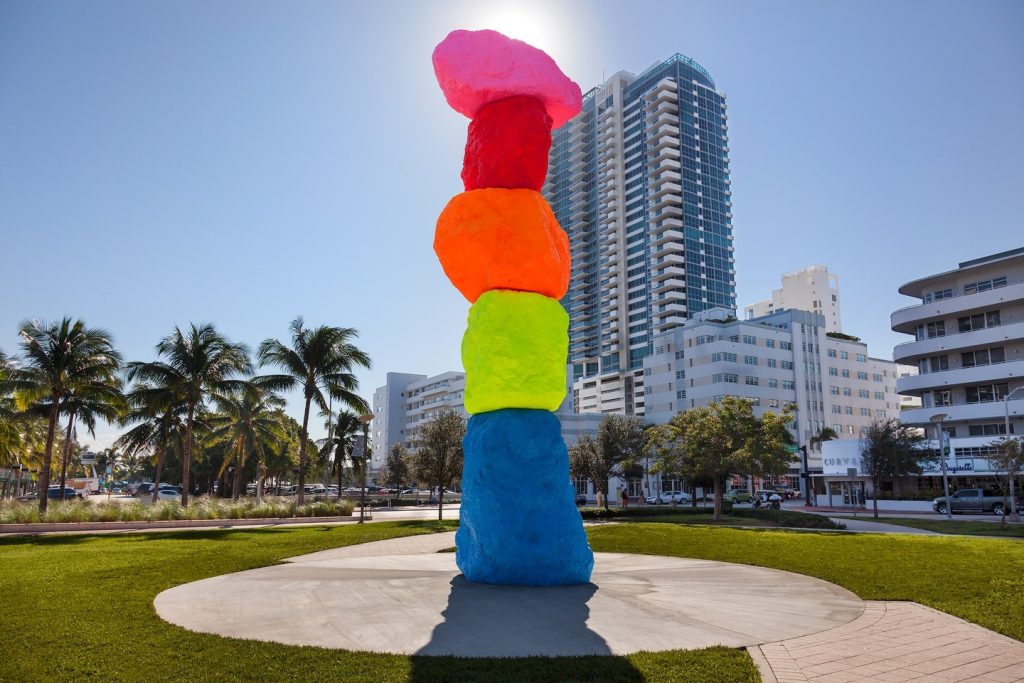Miami Art Week 2016: Theater + Virtual Reality Collide
From intimate, immersive drama to no-limits theater and geodesic dome dance performances, all in the Faena District

One can expect many things from Art Basel Miami Beach and Miami Art Week as a whole—there’s the frequent opportunity for Anish Kapoor selfies; plenty of Instagrammable, text-based statement pieces (some good, some really not); and unlikely collaborations at obscure locations that one must fight against the traffic to witness. This year, however, a few surprises left resounding impressions, and they were drawn from the past and what we hope to be the future of art. First, traditional performance art—from Miami City Ballet School’s opening night performance at the Faena Forum to the burlesque stylings of Simon Hammerstein’s takeover of the Perrier-Jouet-soaked Casa Faena—appeared with powerful, tactile force.

In opposition to these physical artistic portrayals, virtual reality carried substantial weight this year built upon truly inspiring use. We ourselves were on-hand to discuss the impact of VR on art and design with the multi-talented Daniel Arsham, for a Whitewall magazine panel at the Faena Hotel’s screening room. A few steps away, artist Rachel Rossin—commissioned by Artsy—used VR, 360° projection and avatar puppeteering to cast a virtual world on the interior of a massive geodesic dome known as Faena Art’s “Time Capsule.” And these are just a few examples, all held within Miami Beach’s Faena District—hotelier Alan Faena’s hospitality and cultural hub that we’ll explore more in-depth later this week.

One work, hidden on the second floor of the Faena Bazaar, united both theater and virtual reality in such a startling way that it remains one of Miami Art Week’s most important experiences. Two of the three players involved already carry clout in their respective fields. Helming the theatrical element, Punchdrunk International (the acclaimed organization behind “Sleep No More“) developed a brief, well-directed narrative. On the technology side, the experience utilized Samsung Gear VR powered by Oculus. A third organization that’s quickly building a following, VR-specific content studio Virtualize, produced the content experienced within the device. Together, a 4D VR experience was born that tapped into more than just sight and sound—our first time experiencing virtual reality with more senses triggered into action.

Known primarily by its hashtag, #believeyoureyes, the art piece begins as an actress ushered an attendee into a small red velvet draped room. There, Samsung Gear VR was placed upon the guest. The 4D visual presentation featured the same actress, working her way around the room. Sound, however, came from the actress herself—in real life. The actress would physically touch the guest, her breath was felt on one’s skin. Even the scent of the room was taken into consideration. A theatrical event unfolded before one’s eyes in a digital manner, but it was also occurring in the tangible world simultaneously. The content within grew more troublesome. And a line between the real and virtual was further crossed. This was powerful storytelling, true to theater but employing advanced technology.

Here, theater moved forward adding a new dimension to the storytelling. In turn, virtual reality made an advancement in both its innovative narrative and captivating use of sense beyond the technology. It was a truly hidden gem in the heart of a burgeoning Miami Beach destination. As with most art during the week, this isn’t the first time the project was shown. It initially premiered in May 2016 at the Cannes Lions Festival in France. There was also an exclusive six week run at Samsung 837 in NYC. For anyone interested in theater, VR or both, it’s worth seeking out wherever it may turn up next.
Casa Faena and Rachel Rossin’s “Collective Reality” images by David Graver, all other images courtesy of Samsung












